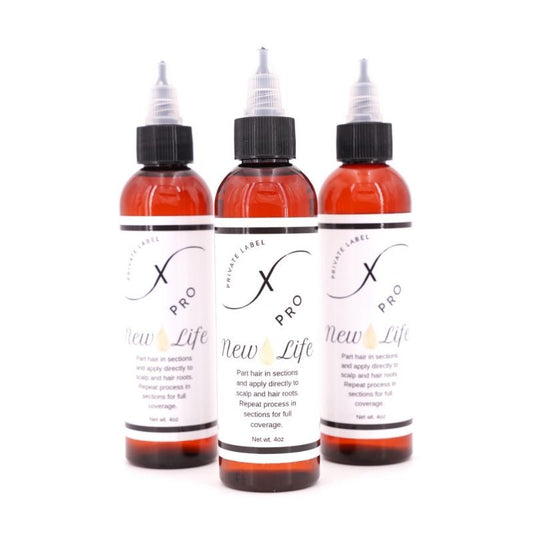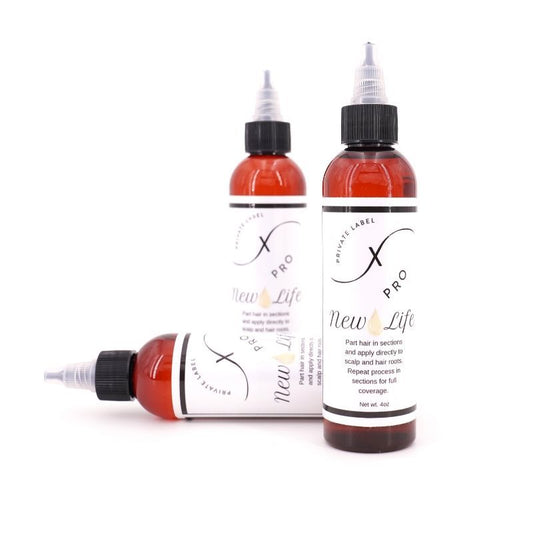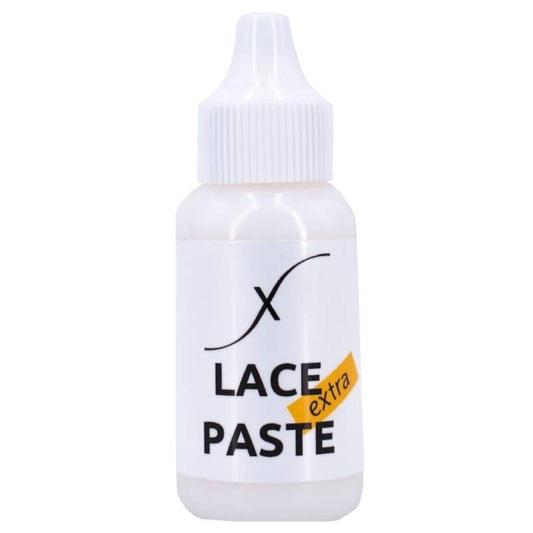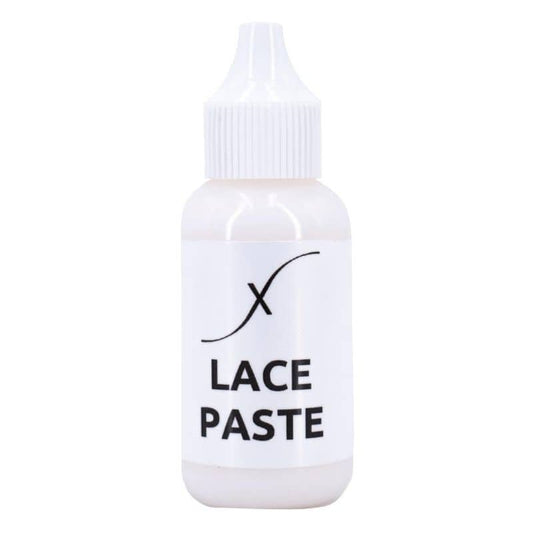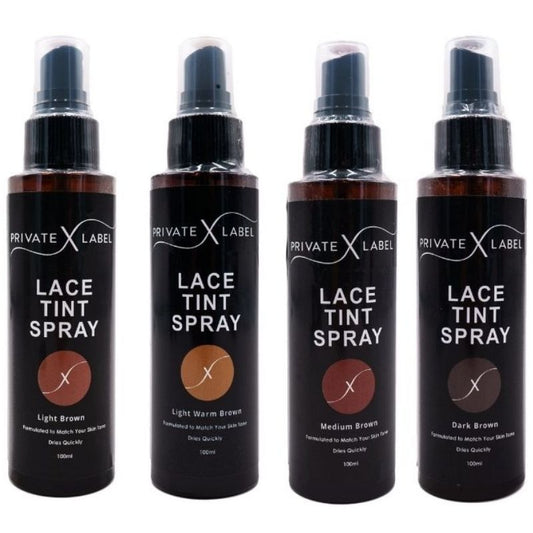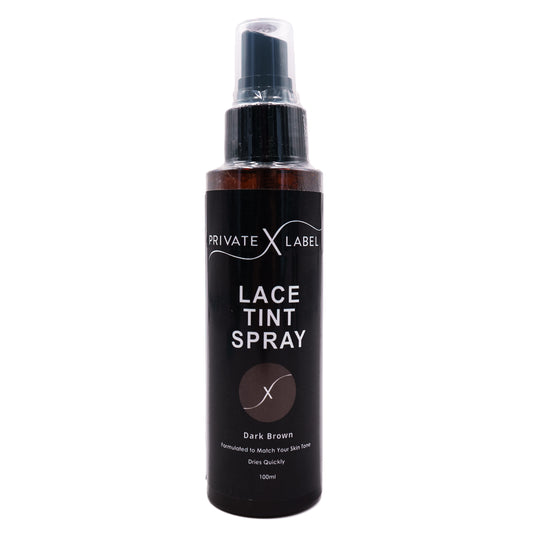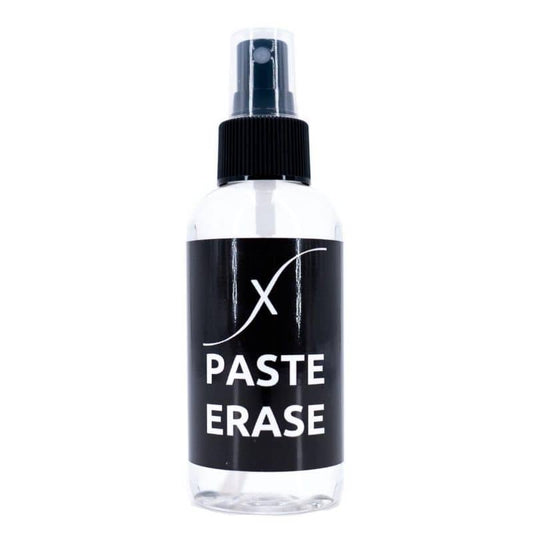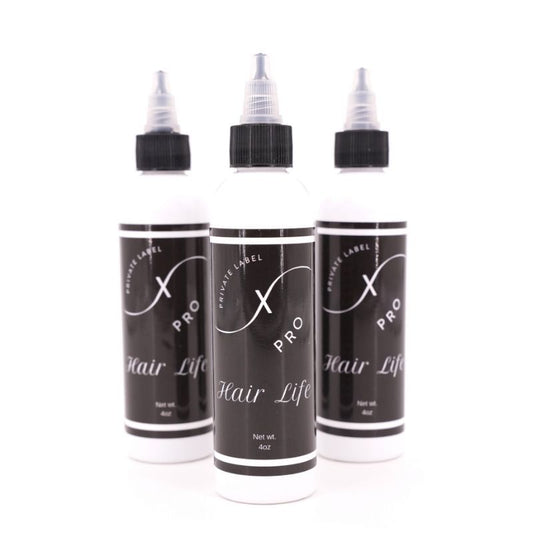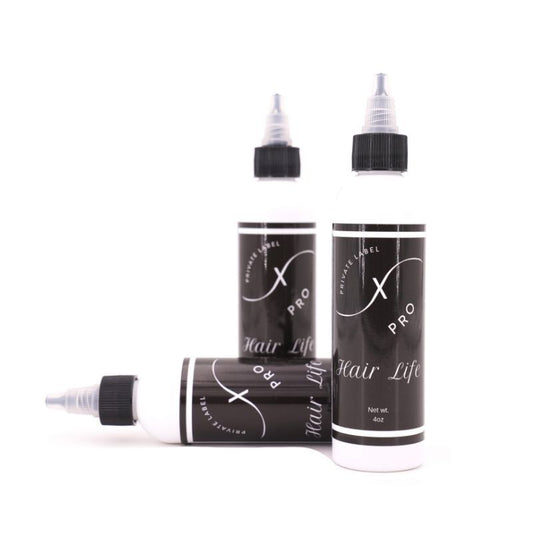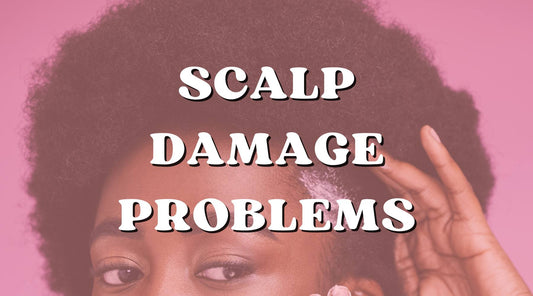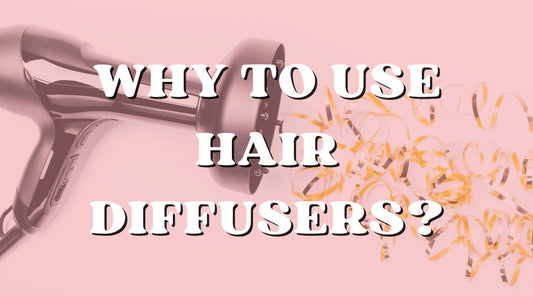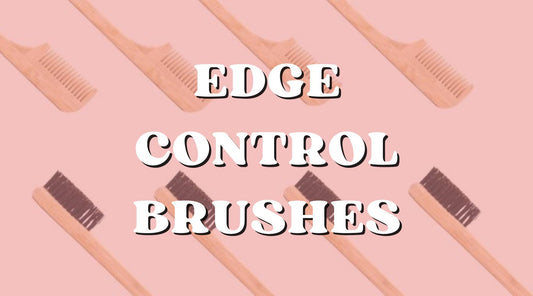1260 Memorial Drive
Atlanta, Georgia 30316
404-458-1330
What Your Shedding Amount Says about Your Natural Hair
Mikey MoranHow much hair are you looking at after each day?
Find out how to understand if your shedding is normal or not and what you can do to lessen it. 👇🏿
Whether it's your natural hair or human hair bundles, keep reading to learn more about your hair health!

Is My Hair Shedding or Breaking?
It is normal to experience shedding daily.
On average, we shed from at least 50 to 150 hairs a day. If you notice any more than that, you might be experiencing excessive shedding or even hair loss.
No worries, though, because as women, we may shed more hair from pregnancy, stress, changes in birth control, weight, or recovering illness.
Your mental state takes a toll on your body, and your hair is not exempt.
Usually, excessive shedding remains temporary since stress levels and health conditions can progress.
Once you begin to feel like yourself again, your natural hair does as well. You can tell when you're naturally shedding if you can see or feel the bulb at the end of fallen strands.
It comes directly from the scalp. The Bulb Test allows you to check the health of your hair by checking a small section from your brush or comb.
If you see most hairs are ripped or broken off, then you can indicate that you are experiencing breakage.
If it's not because of improper manipulation when detangling or styling, then it could be because of heat or chemical damage to your hair.
The weaker your hair is, the more it breaks when handled.

Controlling Your Breakage
Breakage differs from shedding since it is unnatural.
Unlike shedding, it is caused by our own hair manipulation but can be controlled.
If your hair suffers from constant breakage, split ends, or unruly strands, then it could be due to how you detangle.
Make sure to check out these tips to regain strength:
Finger Detangling
I'm hearing a lot about finger detangling and its benefits, but for me, it's not beneficial on its own.
However, I've learned that if finger detangling doesn't get every knot out, it's okay!
I have 4C hair, so I have very tight coils that tangle easily. It makes it much easier to detangle with a comb when I do so beforehand with my leave-in conditioner and my fingers.
In sections, I try to separate any significant knots in my hair so that when I comb, it never gets stuck.
Although it is very time-consuming, there is indeed a vast difference in the amount of hair lost after I detangle entirely.
Proper Detangling
Detangling helps to remove tangles and loose hairs that may become matted or cause knots.
A lot of women become frustrated with constant breakage when trying to grow their hair out. Looking to retain length?
I might have a solution for you! If you are looking for ways to detangle and minimize damaged strands, follow the guidelines below.
Wet or Dry Hair
Did you know hair is weakest when wet?
For some, it is easier to detangle on damp hair rather than dry before styling.
Depending on your hair type and method, you can decide what is better for your hair.
No way is superior to another, just whatever allows for the least amount of hair to shed. For dry, kinky hair, thoroughly applying a water-based conditioner helps to lubricate your strands.
If necessary, you can ease the process even more by finger detangling with coconut oil or conditioner beforehand.
As long as you comb through gently, you will be able to glide through without ripping hairs apart.
Looser curls and those with high porosity hair types can benefit from added oils to brush through on the regular.
On wash day, adding conditioner is fine but not needed every time.
The hair lacks the flexibility it gains with added moisture, so you want to be gentle and work from the ends up.
Sections
When you begin to detangle, you want to ensure you do so in sections to give all areas of your head special attention.
When you try to detangle at once, you never fully get every single knot and tangle out without pulling out half your scalp.
It takes more time, but patience is vital with natural hair to ensure each strand thrives on its own.

Being Smart with Products and Tools
When it comes to changing up your look, you always want to do so carefully.
We use different products and tools to help bring hair to our desired styles, but anything in excess could cause harm to your strands.
Hot Tools and Chemical Usage
The use of heat and chemicals on your hair is not always wrong; however, the overuse of both without proper protection can cause breakage.
If you have naturally curly hair and are looking to straighten, curl, relax, or color melting your hair, then find a professional! Especially if you're not sure about using hair relaxers or if you're afraid of damaged colored hair.
Your stylist should be able to inform you how to care for your hairstyle outside the salon.
If you are keeping up with your look and taking breaks in between, you are less likely to experience damage.
Giving your hair a break and making sure you are using protectants can make all the difference for your hair's overall health.
Combs and Brushes
Every single thing that comes into contact with your natural hair has some effect on it.
Even the tools that you use to separate and style your tresses could negatively impact your hair's strength.
When you detangle your hair, use a tooth comb, starting from the ends. If you need to use a brush, consider combing before you do to help loosen any tangles.
Brushing helps to smooth the hair after combing, and there are many different types to choose from.
Wooden combs and natural brushes are better options for your hair's improvement.

Trim Split Ends
Growing your hair out includes regular trims.
Though it may seem like it is counterproductive, the end goal is to have long hair that is also strong.
Keeping split or damaged ends eventually starts to affect the state of your natural hair.
Constant manipulation, the weather, and your lifestyle can all cause ends to split.
Damaged ends can go through treatments, but the best way to deal with them is by trimming them or using the hair dusting technique.
Giving your stands a fresh start from the bottom up will guarantee a healthier look and feel overall.

Keeping Moisture in Strands
The tighter your curls and coils are, the harder it is for moisture to penetrate through your strands.
So, if you are dealing with dryness, there are many ways to restore the hydration in your hair.
When you know your hair, you can alter your regimen to include moisture retention.
For added moisture, you can pre-poo before washing or wash with organic products.
Most of the time, the chemicals within our wash products can strip the hair of its natural oils, leaving us with even drier hair. You can also make sure when you are in deep condition that, you do so either overnight or with low heat.
Any method that leaves your hair feeling softer and more manageable afterward will ease the styling process.
Using the LOC method or sealants to trap moisture will help keep the moisture in your hair all day.
Not every technique works for everyone, so keep experimenting until you find the perfect way to add moisture while preventing breakage and shedding.
It is definitely possible to over-saturate your hair with moisturizers.
Although you are looking to find better ways to soften your strands, overdoing it with products will only do more harm than good.
Balance is key, which is why we have our ways to ensure moisture throughout our routine.
You must ensure you are using enough product that can dry fairly quickly on its own.
Trying to keep hair basically damp all day throws off your protein balance and leaves your hair prone to weakening.
And it's always helps to buy good quality hair bundles in the first place, if you suffer from weave shedding. Think of something like the Medium Brown Body Wave Bundle or the Honey Blonde Body Wave Bundle!

Clean Scalp
I hope none of you think you can have great hair without proper maintenance.
Wash day is vital for your hair regimen; that's why we spend a whole day on it! No part of your cleansing process should be rushed, skipped, or neglected.
Your scalp itself has to be clean and moisturized to be able to produce new (and greater) growth. How often you choose to clean your hair is dependent on you and how fast your hair becomes dirty.
Proper shampooing and conditioning refine your hair, allowing for more elasticity and less breakage.
A basic wash day routine can consist of a pre-poo, shampoo, deep condition, moisturizing, and styling.

Noticing Excess Shedding
Don't panic when you notice more hairs on your pillow and comb than usual.
Worrying will only cause you to lose more hair! If you begin to become unhappy with the state of your natural hair, then you must take the necessary steps to restore its strength, but also your own.
Building your physical and mental capacity can help improve your hair's condition. Usually, the main reasons for excessive shedding stem from stress. To lower your tension levels, engage in positive behaviors.
Exercise helps those suffering from anxiety and depression. Endorphins are responses that are created by the brain to aid in body boosts or pleasure.
The more you help yourself feel better, the more you will begin to look better.
Clear skin and strong tresses do not appear overnight, so a detailed daily routine can increase your overall health.
Being kind to yourself can be more than working out and eating right; you can also eat dark chocolate, laugh, try something spicy, spend time doing something you love, or even have sex.
Yes. All good!

Know Your Hair
So what if you're taking care of yourself but still experience shedding?
Be sure to know if your fallen strands are merely following the hair cycle or not. It all just depends on your hair, including the length, density, and care consistency.
Length
It may appear as though you are losing more hair, but remember, your hair grows.
Especially for those growing their hair out, the same amount of hair will shed naturally.
The only difference becomes the size of your hairball since long hair is obviously way bigger. Relax, my friend, it's natural!
Density
The more hairs you have on your head, the more strands you will shed by nature.
Your hair color and type will determine how many hairs are on your head. What may be reasonable to you may be a lot or a little to someone else.
Usually, for dark-haired, curly cuties, we have about 100,000 hairs on our heads.
So, if we are shedding roughly 100 hairs a day, that's less than one percent of our hair's volume.
Consistency
You don't need to count hairs or store hairballs to compare them as weeks go by.
Just make sure you have a proper routine to control how much hair that may shed and/or break during maintenance.
If the clumps of hair are relatively the same size each time, then you should be good. Anytime you notice more hair than usual coming from your scalp, evaluate your hair care from that week.
Sometimes, unnecessary breakage adds to your shedding, which is why it is best always to take your time while handling natural hair.
Think about the past six months of your life.
Did you experience anything life-changing? Change up your diet? Have you been trying out new hair products?
Any lifestyle or physical changes might have caused you to start losing more hair than usual, and you can do more to bring your hair back to its peak.
Taking hair vitamins with loads of calcium and iron and undergoing protein treatments are also ways women who shed can lessen their problem.
You can wear 6x6 Lace Closures for Hair Loss if you want an easy way out!

Shedding vs. Hair Loss, What's the Difference?
Shedding is part of the hair growth cycle because even as you shed, new hairs begin to grow in place.
With hair loss, after hairs fall out, there is no regrowth. This could be hereditary, due to unhealthy habits, or because of constant tension-based hairstyles and products.
Whatever the cause is, with the help of a dermatologist, it can remain regulated. They specialize in skin, hair, and nails, so if you notice any thinning or balding over time, consult one.
The issue with hair loss is that if the cause is not easily reversible, you might need to start considering medication.
I can't tell you exactly what you need to do since hair loss is more severe and depends on the source.
Don't try to pile up on supplements and online remedies, for many doctors have stressed to seek professional help before more damage appears.
Alopecia is the medical term for the most common type of hair loss, but it has levels.
Only a professional would be able to tell you your exact type to help with the correct medication.
Just be sure not to let the hair loss worry you, as stress doesn't help your situation.

S.O.S (Save Our Strands)
The only way to control your hair's behavior is by controlling how you take care of it and yourself.
It is clear that the only way to ensure secure, healthy hair is to take up the methods that cater to your hair type.
Having all the right hair care products won't make a difference if you aren't careful with your manipulations.
Only you know when your hair is happy or not, and even if you are unsure about products or methods, always consult a professional.
It is better to be safe than sorry. Catching all your bad habits early can lead to a longer life of beautiful hair. 🌞
By detangling and styling gently, as well as maintaining a clean and nourished scalp, you'll be able to know whether you need to take extraordinary measures.
There's always a solution to help the overall state of your hair; you just have to be dedicated enough to take all the necessary precautions for your hair to flourish.

